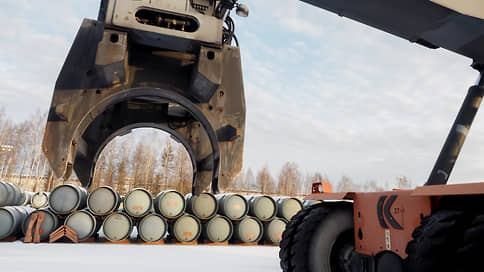The United States reduced the purchase of uranium from Russia by a quarter
[ad_1]

The United States in 2022 reduced the purchase of uranium raw materials from Russia by 24% year-on-year, to 4.78 million pounds of U3O8-equivalent. The decrease in deliveries, according to analysts, could be due to a sharp rise in prices and the specifics of shipment schedules for long-term contracts. Uranium prices in 2022 rose to the highest since 2016, forcing US consumers to cut purchases by 13% overall. Russia is still the leader in the supply of uranium enrichment services for US nuclear power plants. Due to geopolitical risks, Western buyers are trying to get away from Russian supplies, but this is hindered by the fact that the existing processing capacities are already fully loaded.
U.S. nuclear power plant operators have reduced their purchases of uranium raw materials from Russia in 2022 by 24%, to 4.78 million pounds of U3O8 equivalent, according to EIA reporting. This scope includes natural uranium (U3O8, nitrous oxide), uranium hexafluoride (UF6, natural uranium conversion product) and enriched uranium. Tenex (part of Rosatom, exports uranium abroad) declined to comment.
Uranium is used to produce nuclear fuel for nuclear power plants. The United States has 93 nuclear power units with a capacity of about 96 GW. In 2022, they produced 18.2% of the country’s electricity, according to the IAEA.
Russia’s share of the US uranium market declined marginally as US consumers generally cut back on purchases. Total uranium purchases in the US (including domestic production) fell by 13% yoy to 40.5 million pounds of U3O8 equivalent (23.5 million pounds of natural uranium, 8 million pounds of UF6 and about 9 million pounds of enriched uranium) . The share of raw materials of Russian origin in 2022 was 11.7% against 13% in 2021.
The USA buys more than 95% of uranium raw materials from abroad. Canada was the top supplier in 2022 with a 27% share, with shipments up nearly 61% to 11.1 million pounds U3O8-equivalent. Kazakhstan sold 10 million pounds to the US. Uzbekistan – 4.44 million pounds (an increase of almost 78% yoy), bringing its share in the US market to 11%.
The volume of deliveries from Russia, judging by the statistics of recent years, significantly depends on the price, increasing during periods of low prices. One of Kommersant’s interlocutors in the industry agrees that the decline in the supply of raw materials from the Russian Federation in 2022 may be associated with the delivery schedule in long-term contracts, as well as with market prices for products, but does not necessarily mean a reduction in the total volume of contracts. Last year, the cost of uranium raw materials grew at a record pace: for US consumers, the weighted average price rose by 15% yoy to $39.08 per pound of U3O8, the highest since 2016, the EIA said in a report. Moreover, Russian products went up in price by 55% at once, to $35.2 per pound of U3O8.
Russia remains the leader in US imports of uranium enrichment services (the most capital-intensive and technologically complex process in the nuclear fuel cycle). In 2022, Russia’s share in this segment was 33%, or 3.4 million units of work of division (SWU). The rest of the deliveries came mainly from the EU and the UK, where the Urenco plant is located. The volume of deliveries from the only American enrichment plant Urenco amounted to 3.9 million SWU. The average SWU price for US buyers is $101 (up 1.5% yoy).
All last year, Western nuclear power plant operators tried to get away from Russian supplies for fear of imposing sanctions on Rosatom. Among all stages of the nuclear fuel cycle, conversion and enrichment services are now showing the greatest interest due to geopolitics, Seitzhan Zhanybekov, director of the marketing department of Kazatomprom, said at a conference call in March. Kazatomprom accounts for 42% of the world’s uranium production. “Despite the fact that sanctions against the Russian nuclear fuel cycle have not been introduced, some energy companies are working to find new providers of conversion and enrichment services,” he noted. “Definitely, last year and early this year we saw some new players on the open market, which previously bought most of their fuel needs in the form of finished products.
Yerzhan Mukanov, Chairman of the Board of Kazatomprom, noted at the same time that “more and more energy companies are ready to take on long-term obligations under contracts with Western enrichers and converters, which need to use their existing processing capacities to the limit in order to meet this demand.” Almost 114 million pounds of U3O8 were awarded long-term contracts in 2022, the highest since 2012. At the same time, the average price in long-term contracts rose to $52 per pound in 2022.
[ad_2]
Source link





